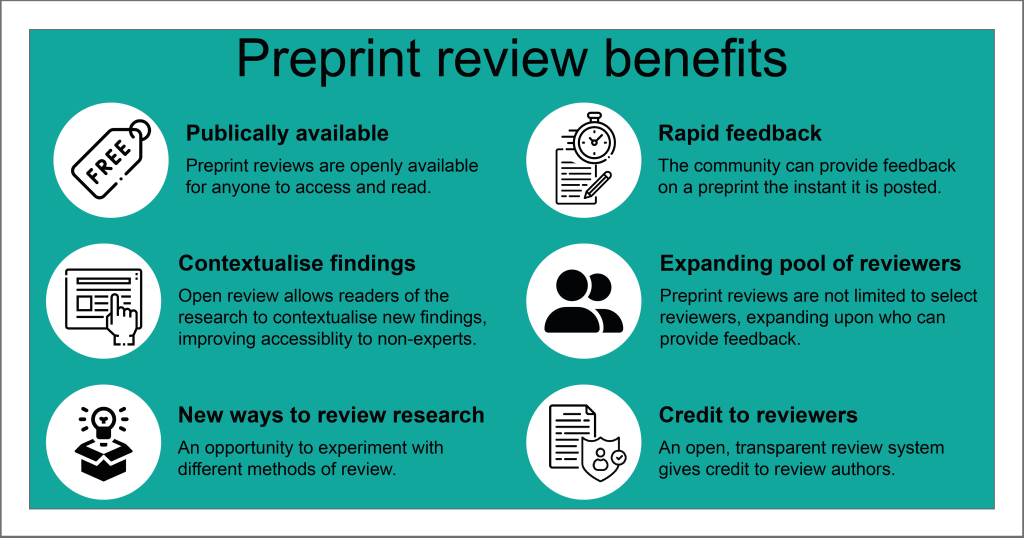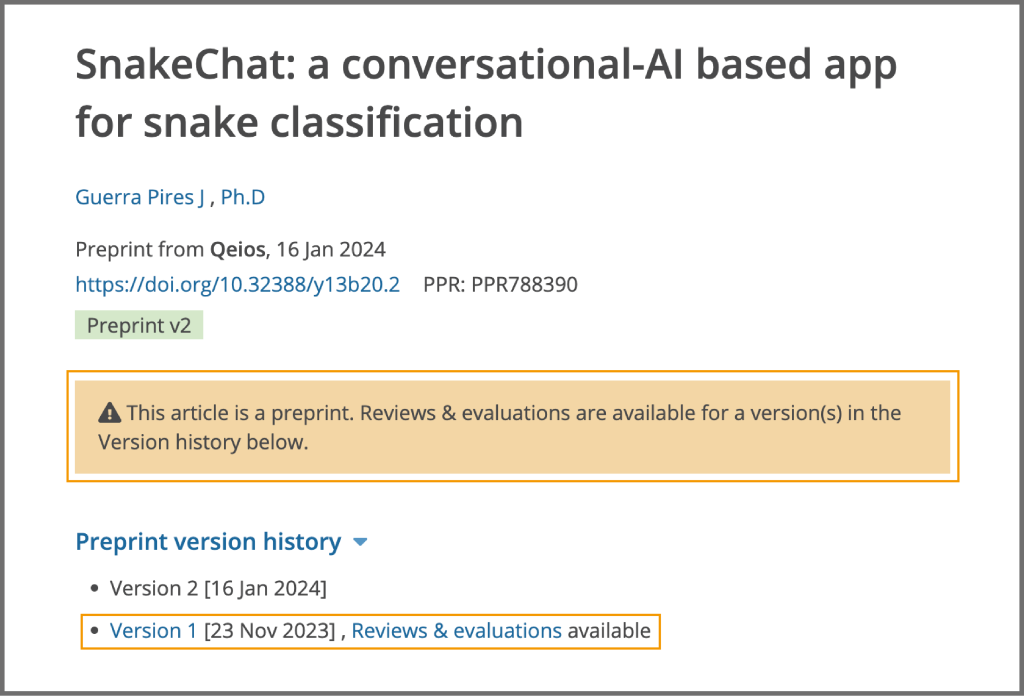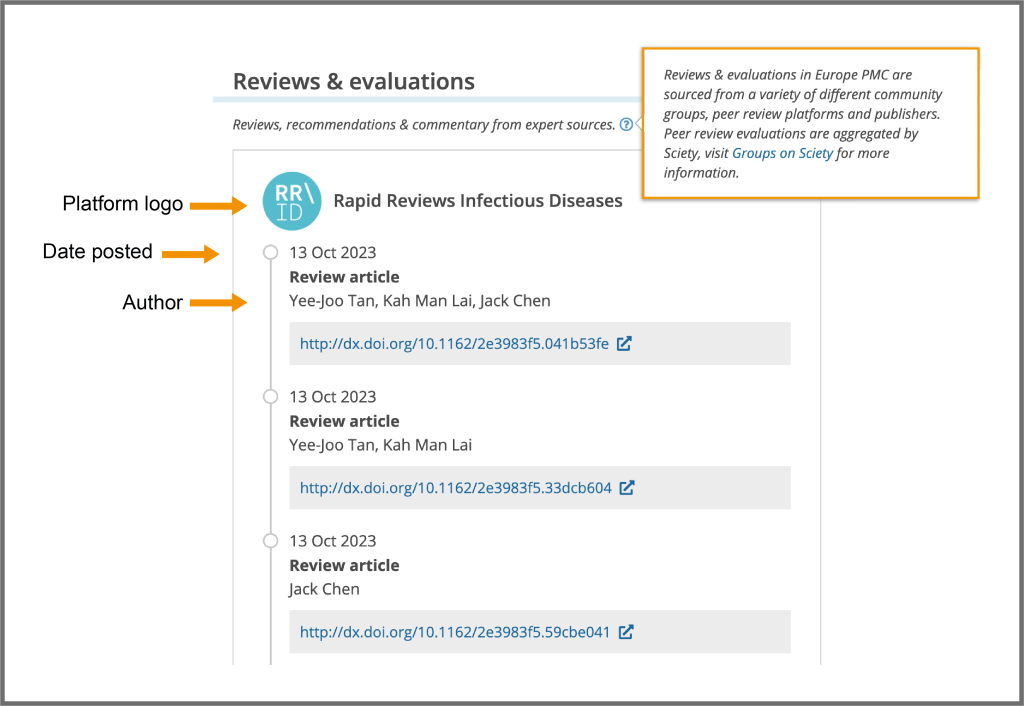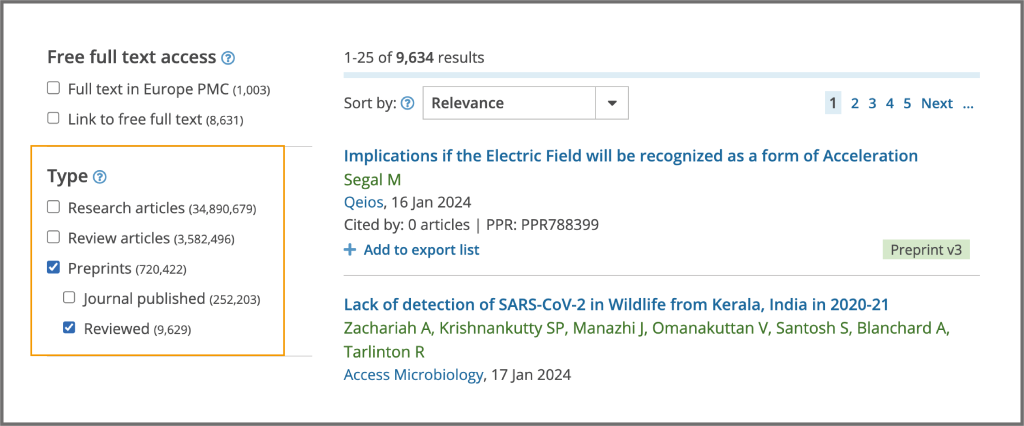Preprinting has soared in popularity in the life sciences and is increasingly recognised as an excellent method to share research outputs quickly and freely. While preprints have gained popularity, an important consideration is ensuring their scientific quality. This prompted the development of platforms where researchers can comment on, evaluate, and review preprints.
Preprint review benefits
Preprint review offers several notable benefits to the scientific community. Firstly, it provides an avenue for rapid feedback from experts in the field, helping authors improve the overall quality and rigour of their research. The public availability of the preprint review process expands the number of potential reviewers in comparison to traditional peer review. This fosters a collaborative environment where knowledge exchange is more open and equitable.
Finally, as preprint reviews are freely available they can aid in contextualising research, making scientific findings more accessible to non-experts and promoting broader engagement. This ultimately fosters a more inclusive scientific community.

Growth of preprint peer review initiatives
Excitingly, preprint review is an evolving concept, allowing researchers to experiment with innovative review approaches and encouraging the exploration of new, more effective methods for research evaluation. A recent publication identifies 23 platforms for preprint review and notes the range of different approaches taken. For example, eLife’s model allows authors to submit a preprint which is then evaluated by expert reviewers using specific assessment criteria, followed by author revisions. Meanwhile, ASAPbio-SciELO Preprint crowd review circulates a preprint to crowd members, whose comments are then collated into a public review. Other platforms, such as preLights, highlight community-selected preprints with a summary of their thoughts on the significance to the biological community. There are many more examples of new review models being developed as preprint peer review adoption grows.
Addressing the challenges in discovering preprint review
As the number of review platforms increases, navigating preprint reviews scattered across them poses a significant challenge. Review aggregators, like Sciety and EMBO’s Early Evidence Base, provide a single access point for reviews from different communities. However, few preprint discovery tools connect preprint versions to their evaluations. This makes it increasingly difficult to discover preprint peer reviews linked to preprints, constraining their utility.
To address this challenge a community-endorsed framework known as DocMaps has been developed in a collaborative project led by Knowledge Futures. DocMaps can be used to share information about the preprint review, including a link to the reviewed preprint, review platform and author, evaluation date and more. The DocMaps format is machine-readable, which enables other platforms and databases to “read” review information automatically and display it for their users, making preprint reviews easily discoverable.
Enriching preprint reviews in Europe PMC
To link preprints included in Europe PMC with associated reviews, Europe PMC has set up a process to pull information about the review from Sciety and EMBO’s Early Evidence Base in the DocMaps format. To do this Europe PMC developed a piece of open source software called docmap-parser which converts a DocMap file into the XML format used by the Europe PMC database. Review information is then displayed on the Europe PMC website and shared via a dedicated API module to display links to preprint reviews in a visually appealing way.

Using the DocMaps framework has allowed Europe PMC to develop new tools and features that support the wider preprint community.
For example, preprint review status can be easily identified in the banner on the preprint page and in the version history. This provides clarity on which preprint version the review is assessing and improves the transparency of the preprint review process.

The ‘Reviews & evaluations’ section on the preprint page in Europe PMC summarises all information about available preprint feedback and links to the full evaluation on the relevant review platform. This section was designed with user needs in mind and is based on extensive user research. Reviews are grouped by review platform. To help build trust and easily identify the review group, the platform logo and name are shown at the top. For non-anonymous reviews the evaluator’s name is displayed, providing credit to reviewers. Reviews, including author responses, are listed in chronological order, allowing readers to explore the review timeline and ensuring greater transparency of the review process.

To improve the discoverability of reviewed preprints Europe PMC offers a search filter to quickly find preprints with linked evaluations.

The future of preprint review in Europe PMC
Preprint review is a rapidly developing area with the opportunity to create an ecosystem that best meets the needs of the scientific community.
Thanks to essential work from Sciety and EMBO’s Early Evidence Base over 8,000 DocMaps have been created for preprint reviews by 15 different review groups. As work on expanding this further to represent more communities continues, Europe PMC started including preprint review information available in Crossref. This allowed us to add reviews from 5 new providers and we hope it will enable more communities to link their reviews to preprints in Europe PMC in the future.
As preprint review is taking shape, it is very important to lay technological foundations and develop community standards that accommodate many different approaches to preprint review. As a supporter of innovative publishing practices, Europe PMC together with ASAPbio co-organised the ‘Supporting interoperability of preprint peer review metadata’ workshop to define best practices and create a roadmap for action. Sign up to join the conversation.



